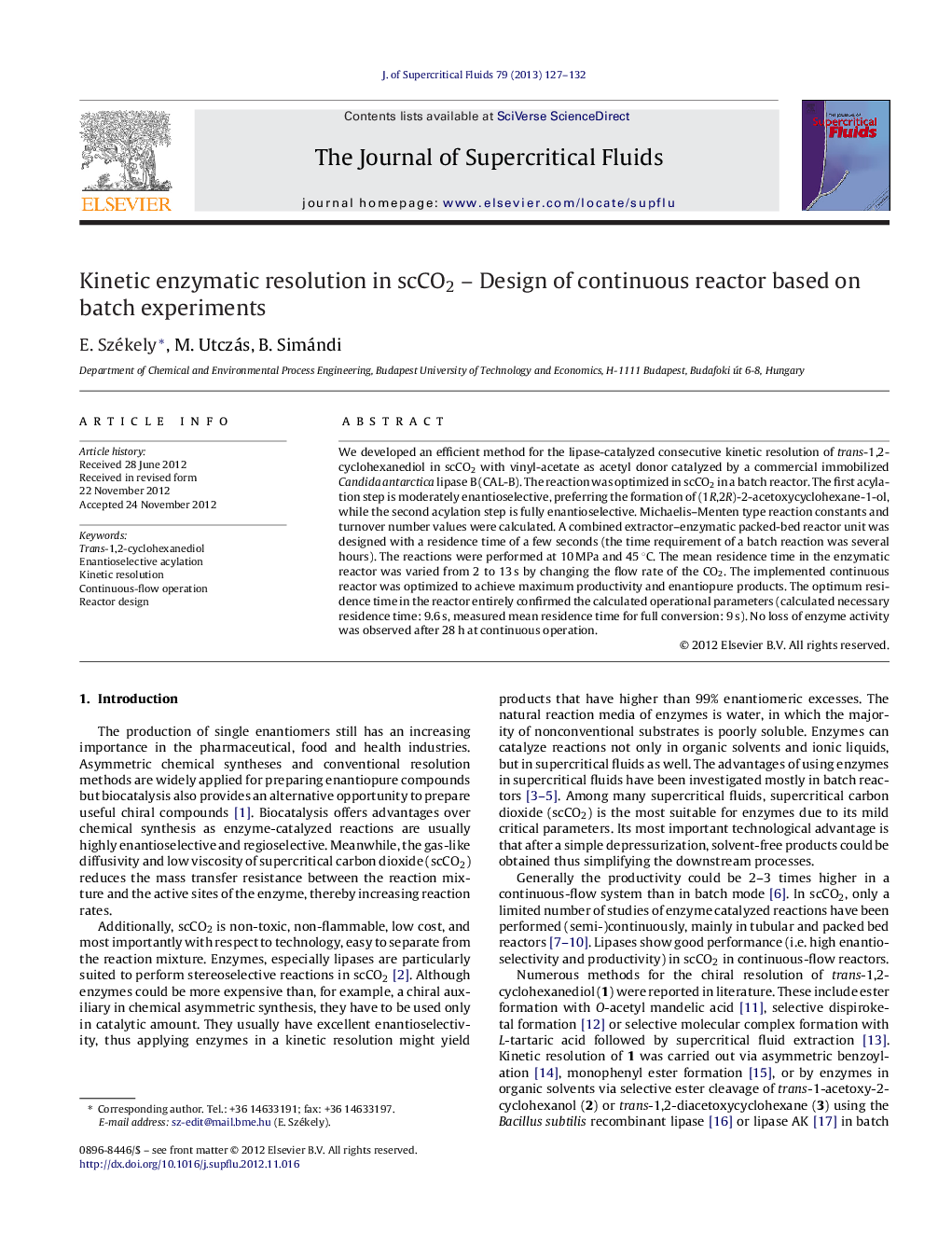| Article ID | Journal | Published Year | Pages | File Type |
|---|---|---|---|---|
| 230725 | The Journal of Supercritical Fluids | 2013 | 6 Pages |
We developed an efficient method for the lipase-catalyzed consecutive kinetic resolution of trans-1,2-cyclohexanediol in scCO2 with vinyl-acetate as acetyl donor catalyzed by a commercial immobilized Candida antarctica lipase B (CAL-B). The reaction was optimized in scCO2 in a batch reactor. The first acylation step is moderately enantioselective, preferring the formation of (1R,2R)-2-acetoxycyclohexane-1-ol, while the second acylation step is fully enantioselective. Michaelis–Menten type reaction constants and turnover number values were calculated. A combined extractor–enzymatic packed-bed reactor unit was designed with a residence time of a few seconds (the time requirement of a batch reaction was several hours). The reactions were performed at 10 MPa and 45 °C. The mean residence time in the enzymatic reactor was varied from 2 to 13 s by changing the flow rate of the CO2. The implemented continuous reactor was optimized to achieve maximum productivity and enantiopure products. The optimum residence time in the reactor entirely confirmed the calculated operational parameters (calculated necessary residence time: 9.6 s, measured mean residence time for full conversion: 9 s). No loss of enzyme activity was observed after 28 h at continuous operation.
Graphical abstractFigure optionsDownload full-size imageDownload as PowerPoint slideHighlights► Consecutive enantioselective acylation in scCO2 catalyzed by lipase. ► Design of continuous reactor setup based on batch reactions. ► Optimization of average residence time to allow enantiopure products with high productivity.
